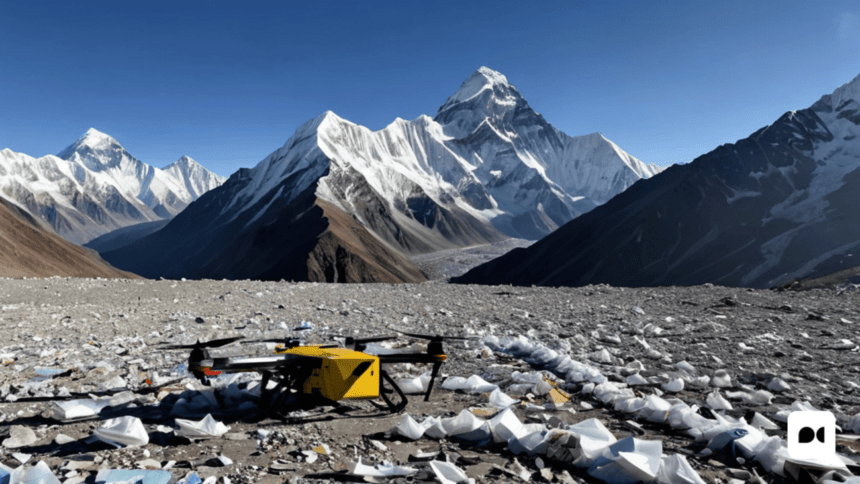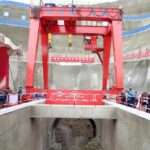Have drones become the new life saviors on the majestic Mount Everest?
The Khumbu Pasang Lhamu Rural Municipality is pioneering the use of drones to transport garbage from the heights of Everest down to the base camp at 17,600 feet. These drones are not only tasked with waste management but are also expected to serve various other functions on the mountain.
The drone being utilized is the DJI FlyCart 30 Category-D model, specifically designed for these test flights. Weighing 65 kg with two DB2000 batteries, this drone can take off with a maximum weight of 95 kg. In dual battery mode, it can cover distances of up to 28 km without payload and 16 km with a 30 kg load. Operating in temperatures from -20°C to 45°C, it can sustain flight for 18 minutes with a 30 kg load and dual battery mode.
During the initial test flights on April 29, the drone successfully flew from the base camp to Camp I at 19,900 feet. However, due to the thin air at higher altitudes, it faced challenges landing at Camp I.

On the following day, April 30, operators managed to land the drone at Camp I by using two oxygen tanks, carrying a load of approximately 40 pounds (18.144 kg). This successful landing showcases the drone’s potential to significantly reduce risks faced by workers in hazardous areas like the Khumbu Icefall.
The Khumbu Icefall, a treacherous section on the route to the summit, has claimed the lives of numerous climbers over the years. Manual investigations in this area involve carrying heavy loads, posing significant risks to climbers and porters.
Over the years, Sherpas have developed sophisticated safety strategies to mitigate risks in the Khumbu Icefall. The Icefall Doctors, a group of specialty workers, chart the route through the glacier each year, aiming to avoid slopes prone to avalanches. Porters typically ascend through the icefall early in the morning, when the ice is firmer and less susceptible to collapse. Additionally, some expedition operators have begun using helicopters to ferry gear to and from higher camps, reducing the need for manual labor.

Despite these efforts, the Khumbu Icefall remains a hazardous area, with at least 50 people having lost their lives there since 1953. The use of drones in this terrain can be a game-changer, potentially saving lives and easing the burden on workers. With the ability to navigate dangerous sections and find safe routes, drones are set to revolutionize waste management and safety measures on Mount Everest.
Related: Internet Outage In Nepal: Several Business Face Huge Losses Due To Internet Blackout
The use of drones in this terrain can be a game-changer, potentially saving lives and easing the burden on workers. With the ability to navigate dangerous sections and find safe routes, drones are set to revolutionize waste management and safety measures on Mount Everest.
“Our goal is to ease the burden on the Sherpas, who put their lives at risk to transport garbage from the high-altitude camps on Everest.” – Jagat Prasad Bhusal, The Chief Administrative Officer of the Khumbu Pasang Lhamu Rural Municipality.
Bhusal explained that even the simple task of removing small items like a piece of chocolate can be extremely challenging at the extreme elevations found on the mountain. The municipality is hoping that the use of drones can help alleviate this formidable task that the Sherpas currently face.
The collaboration between DJI and the rural municipality marks the beginning of a new era in mountain operations. While drones will not replace human workers, they are poised to be invaluable aids in ensuring safer expeditions and waste management practices.
The implementation of the Base Camp Management Procedure 2024 by the rural municipality underscores the commitment to responsible waste disposal on Everest. Climbers are now required to carry poop bags and adhere to strict guidelines to maintain cleanliness and sustainability in the region.
As drones continue to prove their worth in high-altitude operations, the future looks promising for enhanced safety, efficiency, and environmental stewardship on the world’s tallest peak.









